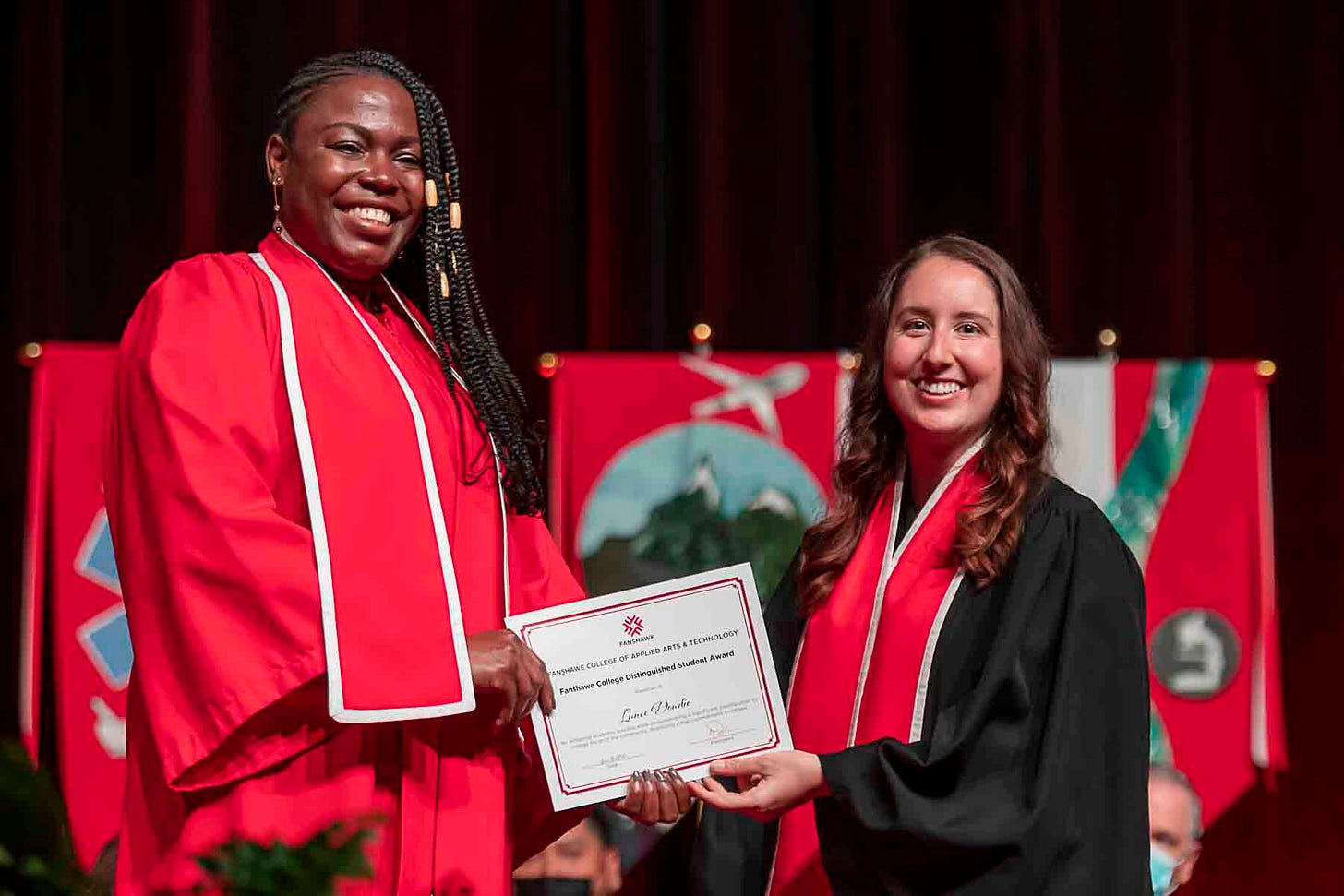What Ontario's Public Colleges Can Do to Save Themselves (Part 1)
The Province has made it clear - it will not help out Ontario's public colleges. Here's what they can do to save themselves.
If there’s anything the impending trade war has taught, it’s that a crisis can force real change.
As I covered last time, Ontario’s public college sector is on the brink of ruin.
Colleges are set to face enormous challenges in the months and years ahead, including budget deficits, declining provincial transfers, and huge drops in international student enrolments.
But as with any crisis — there’s opportunity for real change.
Here’s what Ontario’s public colleges can do to help weather the storm.
Financial Restructuring
1. Diversify revenue streams
This is a trend that public colleges in Ontario have already been pursuing since 2015, and it needs to continue — with haste. The sudden cut of international student numbers has shown just how dangerous it can be to rely on 1 main revenue stream for the majority of your income.
The latest numbers from Stats Can show that nearly two-thirds of all college revenue in Ontario comes from fees, and that is almost exclusively international student dollars.
Despite this heavy reliance, colleges have been looking towards other revenue streams, especially investment income (up 616% over the past decade).
Colleges need to continue to explore alternative funding sources, including industry partnerships, research grants, and alumni donations. A great example is Conestoga College’s property expansions, now owning student housing developments that both solve needs but also generate much-needed revenue.
2. Optimize Program Offerings
Another key element will be for colleges to conduct thorough reviews of their existing programs, and prioritize those that match labour market needs, and those that are financially viable.
As much as higher education is about having many program options to explore your potential — right now this is life-or-death for public colleges. In order to survive, they need to focus on their in-demand top programs right now.
A great example is St Lawrence College’s nursing program, which — despite recent, devastating program cuts — has continued to produce hundreds of highly skilled nursing graduates that the province desperately needs.
Enrolment Strategy
3. Enhance domestic student recruitment
It’s no secret that domestic enrolments have been down for years now. The Ford government has frozen domestic tuition since before the pandemic, making domestic recruitment essentially a losing strategy for colleges — and international students a “better source” of revenue.
But now that’s changed…radically.
With international student enrolments plunging from federal cuts, public colleges need to start developing targeted marketing campaigns to attract more domestic students, especially for high-demand fields like trades and nursing.
A great example is Georgian College’s very own “Domestic Student Recruitment Team”, which has select resources targeted towards domestic students and their needs.
4. Improve retention rates
Retention rates are not only a core element to ensuring colleges have a stable “revenue stream”, but they often set the standard for how provincial governments measure success of a college (ie “key performance indicator”).
Each year, Colleges Ontario publishes its annual graduation rates for its 24 members — showing how different colleges are succeeding (or failing) in keeping students enrolled.
The median percentage of Ontario college students who graduate is 65.5%.
That means that roughly a third of college students are dropping out of their program before graduating (this can be for a variety of reasons: stress, medical emergencies, quitting to start a new job, etc.)
Ontario’s public colleges need to do a better job of creating support services and programs to help boost student success, and ultimately bump up those completion rates.
Conestoga College (in partnership with its formidable student union, Conestoga Students Inc.) does a great job of providing fulsome wellness, learning, and career student services.
5. Explore New International Markets
The recent federal immigration cuts have made it essential for institutions to be selective with who they offer their limited study permits to. That means recruiting highly-interested students who have a high chance of success in an Ontario college.
Right now half of all international students come from either China or India. But that heavy reliance on a handful of sources is bad news if any sudden changes happen.
Given the recent diplomatic rows with both China and India, it’s highly recommended that college recruitment efforts target alternative markets, both to diversify away from a single market (like India) but also to increase successful student outcomes.
There’s a host of other policy ideas I’ve explored on how to boost partnerships, government relations, and program innovations — all of which sadly can’t be packed into this (already long) email.
Stay tuned for Part 2!














